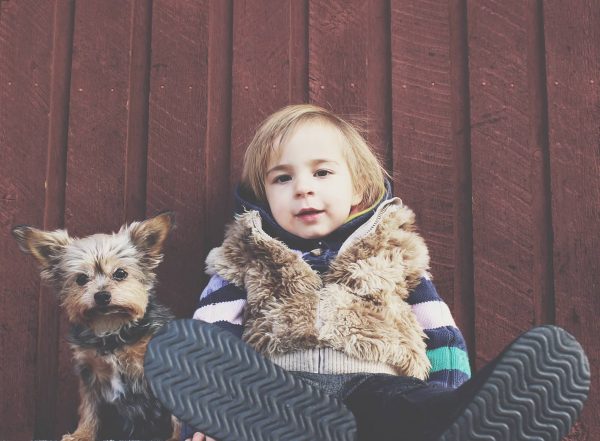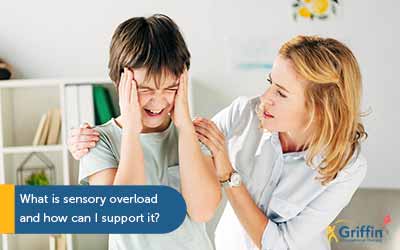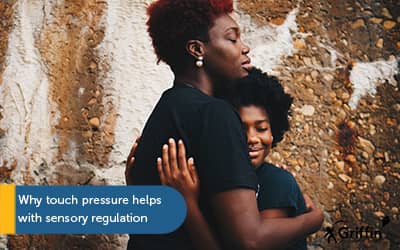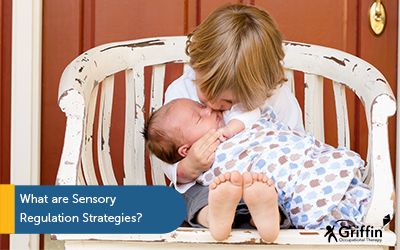How to stop hitting and biting
A common question that arises within sensory OT is how to help children with dyspraxia. Dyspraxia is a term used to describe the difficulty children and adults have when they struggle to plan and organise their movements. It is sometimes used interchangeably with the term Developmental Coordination Disorder (DCD). This is because dyspraxia itself isn’t a formally recognised medical diagnosis, whereas DCD is. In this post we will explore

How to stop hitting and biting
A question that I am often asked is ‘How do I stop this child from hitting and biting others?’ It is often followed by references to behaviour and behaviour strategies. In this article I would like challenge your thinking and help you find the right support strategy for the child. I will cover
Hitting and/or biting is always communication
The first piece of advice I have for you, especially if you’re an educator, is to start re-framing you thinking. Hitting and biting is often thought of in terms of behaviour. A behaviour that must be stopped or extinguished (one of my least favourite terms).
However, to really get to the route cause, you need to start by considering communication. You need to reframe your thinking, remove the word behaviour, and replace it with the question – ‘What is this child communicating?’
This is because, most of the time, hitting and biting are forms of communication. Children who are non-verbal/pre-verbal often use these actions to express their needs, preferences or wants. Even children who have some language use these actions when they are overloaded, or when they don’t have sufficient social communication skills.
In addition, over time, hitting and biting can become a learnt behaviour. In these cases, it is highly likely when it began; it was a form of communication. The child has just learnt that it works to get the response that they need.
What might trigger hitting or biting?
Every child is different, so the triggers will always be unique to that individual. Common triggers for biting or hitting include:

Harry’s story
Harry finds it very difficult to join in play with his peers. He has some language and will answer factual questions and ask for his wants when prompted. However, his social communication is poor. This means he finds it difficult to know how to join in play without disrupting it.
He sees other children in the sand pit, wants to play and goes over hits them. This is his attempt to join in. He lacks the social understanding to know how to play beside children. And, he doesn’t have the social language to request to play. Harry needs help to develop a more socially appropriate way of joining in, speech and language therapist are usually best placed to provide this support.
How to help children who are biting or hitting
As I explained above, step one in helping is to reframe your thinking! Start by asking ‘What is this child communicating?’ It will be important to consider the child’s history as well. So, consider what might the child have been communicating in the past?
A behaviour analysis tool can help. These tools consider events that occur before, during and after behaviour have occurred. They can help to identify triggers and patterns. Common approaches are ABC and STAR.
ABC
ABC stands for:

Jenna’s story
Not long ago, Jenna started biting the children in her class. This behaviour was new, it hadn’t happened in Jenna’s nursery school. However, it was occurring almost daily at her primary school, often during play time. School was using behaviour tokens and time out to try to stop the behaviour, but this wasn’t helping.
Using the STAR approach, see below, school realised that play time was often a trigger. They also reviewed previous reports and realised that in her nursery school, Jenna was allowed to stay inside at the book corner during playtimes. This was because she was quickly overloaded in the playground. Staff also realised that bringing her inside after she bit a child, they were actually reinforcing the biting.
Jenna was biting to indicate that she was overloaded. She did not have the language to express this, but quickly learnt that when she bit a child in the playground, she was sent to a quiet space. All Jenna wanted was a quite space, as this stopped her from becoming overloaded. Staff introduced a quiet space at play times and taught her the sign to ask for this space. This dramatically reduced the incidents of biting, as Jenna’s sensory and communication needs were being supported.
Hitting and biting – searching for triggers
Whilst a behavioural approach is not usually the solution to supporting hitting or biting, it helps with the initial analysis. Your job is to figure out what the child is trying to achieve. Do they want to play? Are they in pain? Is the activity too overloading? Do they need help? Would they like to do something different? Do they want interaction?
Keep a record for a week or two and look for patterns. Sometimes, if the behaviour is new, it might be that something in the environment has changed. Potentially there are new staff. Or, a routine has changed. It may also be that the child is becoming unwell.
Another thing to consider is if the child is maturing developmentally. All children go through a stage of refusal and testing boundaries, suitably titled the terrible twos and threes. For children with developmental delays, this stage can occur much later. So, it may be that the child does need support with understand boundaries.
If a child is hitting or biting, your job is to be a detective. You need to review what occurred before and after and find the triggers. Think communication, think sensory, think about what the child is trying to tell you. This will help you to find an appropriate support for them.
Putting in the correct supports for hitting and biting
Once you have identified the triggers, then you can consider the correct supports for that child. If it is sensory overload, you need to consider sensory supports to help regulation. If it is communication, link in with your speech therapist for advice. They can also help to teach children appropriate ways to join in play. If it’s the terrible twos, communication support and setting behaviour boundaries should help.
The main thing, as I said at the start of this article, it that you start asking Why? Biting and hitting always has a trigger. Your job, is it identify that trigger and then put in relevant supports. Time out or losing behaviour points will never teach a child to ask for help. And when there is sensory overload, your consequence might just be fuelling the behaviour to continue. Start with the Why and as a final challenge; try to explain the Why without using the word behaviour.
If you want to learn more about sensory triggers and sensory supports, you can join our Sensory Aware training here.
Photos credits
Harry –Boylevis Sunders from Unsplash



